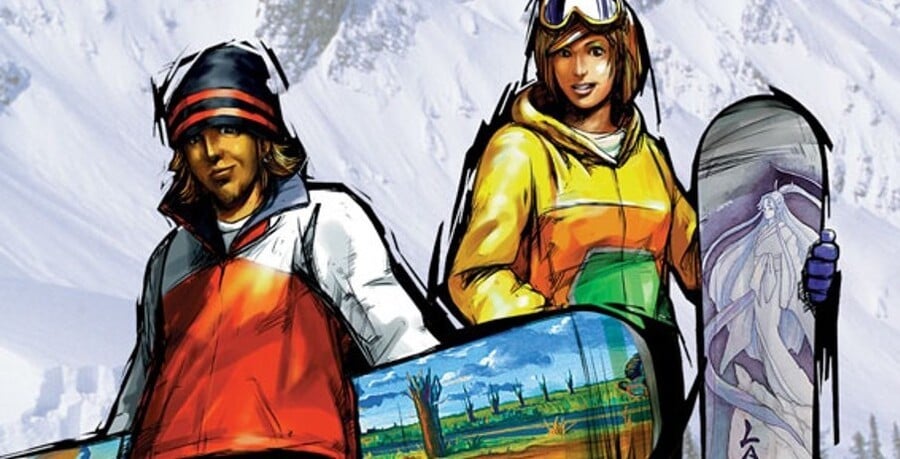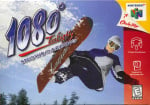
When Nintendo released 1080° Snowboarding in 1998, it turned out to be a more straightforward experience than the Mario 64 developer was typically known for.
There were no castle-conquering reptiles, cake-peddling princesses, or psilocybin-addicted plumbers, just a cool gang of snowboarders racing down a mountain in the quickest and most stylish ways available to some funky beats.
In contrast to Nintendo's other first-party titles, 1080° was obviously targeting an older, more teenage audience, and because of this, some within the company, notably the game's lead programmer Giles Goddard, wanted to license the established dance act the Prodigy to provide some music for the soundtrack.
Goddard had worked at Nintendo for a number of years already by the time 1080° rolled around, having been involved in the creation of Star Fox, Stunt Race FX, and Mario 64. He was one of the few non-Japanese developers working inside Nintendo's Kyoto offices, alongside Colin Reed (another UK programmer who also worked on 1080° Snowboarding), and was also the person responsible for convincing Miyamoto to ditch his initial idea of creating a skiing game in favour of a snowboarding title.
As Goddard tells Time Extension, "I didn’t want to make a stodgy skiing game. I wanted to make a cool, snowboarding game. [...] It was going to be a skiing game because that’s what Miyamoto does. He’s not a boarder. He’s a skier. But I managed to persuade him to make a snowboarding game because it’s more fun than skiing (for me at least). [Snowboarding at the time] was sort of niche and a bit risky. They weren’t really sure whether it was going to be a massive flop or a huge hit, so it was quite a risk to them. The safer option would have just been Mario skiing or something like that."
While developing the game, Goddard was listening to a lot of hardcore groups including the Prodigy, who had just released its critically acclaimed album Fat of the Land featuring tracks like 'Smack My Bitch Up", "Firestarter", and "Breathe". He saw the group's music as the perfect embodiment of that same rebellious, youthful energy he and the team were trying to recreate and felt its music matched the visuals perfectly.
At this point, the Prodigy was one of the biggest acts on the planet, but also one of the most controversial. Its single "Smack My Bitch Up" had provoked criticism from women's groups such as the National Organization for Women who claimed it advocated "violence against women", while its music video for the number one single "Firestarter" had led horrified parents to jam the BBC's switchboards after its music video featuring its devil-horned singer Keith Flint was broadcasted on Top of the Pops.
Goddard explains, "The Prodigy were basically like punk for the ‘90s. If you look at their videos, they’re really sort of in your face. You couldn’t show your parents, could you? And young people kind of love that kind of thing where you sort of have to quietly show your friends because you don’t want grown-ups to find out. It was that kind of image. People love that."
Worth noting is that the group had already featured on the soundtrack to Psygnosis's WipeOut 2097 (called Wipeout XL in North America) a couple of years earlier in 1996, but Nintendo's reputation was arguably far less compatible with the act's irreverent stylings than Sony's.
Nevertheless, whenever Goddard needed to make a video for retail partners, he would constantly put music from the Prodigy over videos of gameplay and was constantly trying to convince Nintendo to try and license music from the band. Sadly, though, he says "it was a bit too far-fetched for Nintendo", with composer Kenta Nagata instead being tasked with the job of "introducing a generation of Nintendo kids to jungle & drum 'n bass".
He tells Time Extension, "I was using lots of tracks from Prodigy’s Fat of the Land album as background. Obviously not in the game, but we were trying to get it in the game. It really fit the images we were making. We used to make videos for Nintendo to show, I think, shops that were going to sell the game. It was a way of almost selling the game to the shop in order to sell it to a customer. So we’d make these videos and I used to slap really sort of hardcore music on the video because we didn’t have any of the music that ended up on 1080 at the time. That was very much the image I was aiming for. It was this kind of risky, sort of young, image."
If you fancy picking up 1080° Snowboarding, you can still buy it secondhand for fairly cheap. It is also scheduled to come to Nintendo Switch Online + Expansion Pack service later this year, if you can wait and want to play it on a more modern machine.

